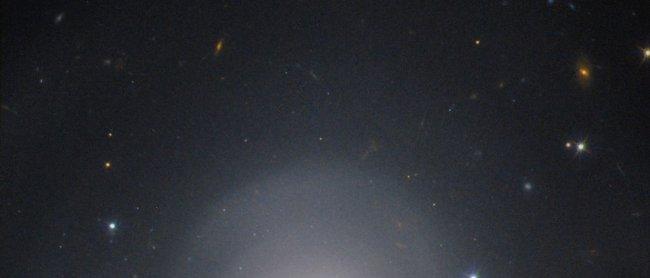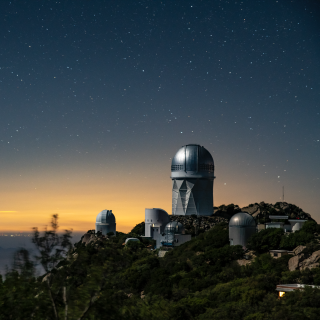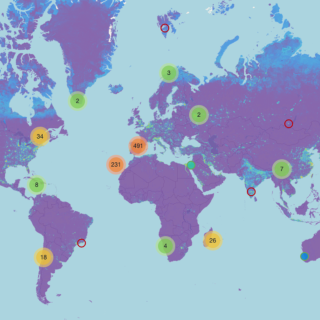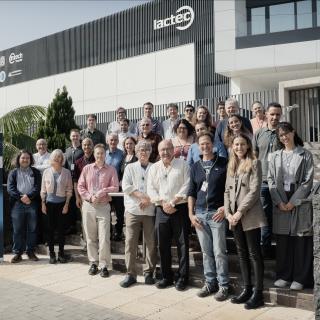On August 17th 2017, Advanced LIGO (Laser Interferometer Gravitational-Wave Observatory) and the interferometer Advanced Virgo made a joint detection of GW170817, a gravitational wave signal arising from the merging of two neutron stars which had occurred at a distance of 40 Mpc (some 130 million light years) from us.
The signal was localized in a region of the southern sky, with a position initially determined with an uncertainty of some 31 square degrees on the sky. The Fermi Space Telescope, with its GBM (Gamma-ray Burst Monitor) instrument, made an independent detection of a gamma ray burst within a time difference of no more than 2 seconds from that of the gravitational merger. The optical follow-up carried out using several telescopes yielded a detection towards the galaxy NGC 4993, which is at the same distance as the source of gravitational waves.
"Nature has once again become very generous to us by placing this exceptional event at a remarkably close distance from Earth, just before the end of this second period of observation of advanced LIGO-Virgo and by the time there were three detectors of the network in operation allowing to locate the source precisely", says Alicia Sintes, principal investigator of the Scientific Collaboration LIGO at the Universidad de las Illes Balears.
The bursting source evolved in a rather unusual way, differently from that of a supernova, a nova or a conventional gamma ray burst. It has therefore been classified as a “kilonova” (a thousand times brighter than a nova), which reached a luminosity sufficient to be identified a few hours after the LIGO/Virgo detection using telescopes at Las Campanas (Chile) and, independently, with the robotic telescope MASTER in Argentina. The IAC, which collaborates in the MASTER project, has participated in some of the first measurements which identified the outburst in the visible and have contributed to measurements of its evolution in time.
The existence of gravitational waves was a direct prediction of Albert Einstein´s theory of General Relativity. With the current discovery it would be the first time that the entire counterpart of the electromagnetic spectrum of a source of gravitational waves has been detected, and the galaxy in which it occurred determined. The publication in the Astrophysical Journal includes more than a thousand scientists, among them IAC researchers Josefa Becerra, Miquel Serra-Ricart, and Rafael Rebolo.
In the accompanying article, whose first author is the astrophysicist Eleonora Troja, of NASA´s Goddard Space Flight Centre, and in which Josefa Becerra has also participated, included X-ray data taken with the Chandra and the Hubble Space Telescope, visible and infrared observations with the Gemini Telescope in Chile, in the visible with the Korean network KMTNet, and radio observations with the Australian ATCA array.
“While the detections in the visible and the infrared took place only a few hours after the detection of the gravitational waves, the X-ray emission was not detected during the first observations attempted. In our article we present the first detection in X-rays, which was obtained 9 days after the detection of the gravitational waves” explained Josefa Becerra, a researcher at the IAC in the framework of the Severo Ochoa programme. “We detected” she adds “an optical and infrared evolution different from that which occurred in X-rays and radio emission, and which can be explained by the coexistence of the kilonova and a gamma ray burst (GRB) together with the production of the gravitational wave”.
“In the future”, concludes this astrophysicist “we will also be able to use the Cherenkov Telescope Array (CTA) at the Roque de los Muchachos Observatory (Garafía, La Palma), which will allow us to undertake this kind of studies in gamma-rays, the most energetic radiation known, and with unprecedented sensitivity”
"The historic detection of the first gravitational signal of the collision of two neutron stars, together with the corresponding electromagnetic emission, marks –highlights José Antonio Font, principal investigator of the Virgo Collaboration at the Universidad de Valencia- the beginning of a new era of discoveries that promises to offer answers to fundamental questions in relativistic astrophysics, cosmology, nuclear physics, or the nature of gravitation. It's revolutionary".
“The optical counterpart of this merger of two neutron stars –remarks Rafael Rebolo, the Director of the IAC- reached a luminosity so great that small telescopes, of only 30 cm of aperture could detect it, which opens the field even to non-professional observatories. According to theoretical models of binary star systems this is not a rare phenomenon, so we can expect more detections in the near future, and we should be able to ascertain better the physical processes involved. The IAC and the Canary Island Observatories are committed to this type of research, and participate in networks of robotic telescopes such as MASTER, which allow a rapid follow-up of this type of events, as well as offering support using the other scientific instruments available at our observatories”
Articles:
- LIGO Scientific Collaboration, VIRGO Collaboration and Partner Astronomy Groups: “Multi-Messenger Observations of a Binary Neutron Star Merger”. B. P. Abbott et al. 2017 ApJL 848 L12. https://doi.org/10.3847/2041-8213/aa91c9
- Troja, E. Et al. “The X-ray counterpart to the gravitational-wave event GW170817”. Nature. Doi: 10.1038/nature24290
- Lipunov et al., 2017, “MASTER optical detection of the first LIGO/Virgo neutron stars merging GW170817”, ApJlett. https://doi.org/10.3847/2041-8213/aa92c0
IAC contacts:
Josefa Becerra: jbecerra [at] iac.es (jbecerra[at]iac[dot]es) and +34922605200




